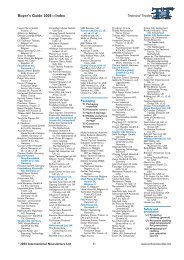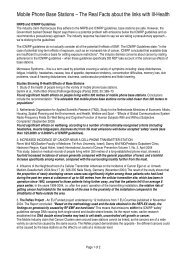West Sutherland Elver Survey
West Sutherland Elver Survey
West Sutherland Elver Survey
Create successful ePaper yourself
Turn your PDF publications into a flip-book with our unique Google optimized e-Paper software.
<strong>West</strong> <strong>Sutherland</strong> <strong>Elver</strong> <strong>Survey</strong> 2008<br />
1979 followed by a fall. Dekker (2003) estimated the decline in recruitment after the early<br />
1980s to be up to 90% on a pan- European basis.<br />
t/yr<br />
80<br />
70<br />
60<br />
50<br />
40<br />
30<br />
20<br />
10<br />
0<br />
1972<br />
1974<br />
1976<br />
1978<br />
1980<br />
1982<br />
1984<br />
1986<br />
Figure 6: Annual UK (England and Wales) catch of glass eel (tonnes) from Cefas Environment Agency and nett export<br />
estimates between 1972 and 2005. It is assumed that > 95% is taken from the Severn Estuary. Effort has stayed same since<br />
1980s.<br />
STOCK DECLINE<br />
The decline of the species has been reported by scientists since the 1940s in Northern<br />
Europe, and since the 1980s in the rest of the continental range (fig. 5a). The scientists from<br />
Indicang (pan European eel research group) have demonstrated that the European eel<br />
stocks are in decline and in some regions, mainly in the North of its distribution area (rivers<br />
of the North Sea, the Norwegian Sea and the Baltic Sea) the situation is critical (fig. 7).<br />
Most scientists show that eel stocks have declined by a factor of ten during the past decade<br />
(Moriarty and Dekker, 1997). Although some of restocking programs have succeeded in<br />
sustaining local fisheries (e.g. Northern Ireland; Baltic Sea; and Italian lagoons), this general<br />
decline is still continuing in all waters where significant stocking was not made and where<br />
natural recruitment continues to decrease or, at the best, remains stable (Moriarty and<br />
Dekker, 1997). Recent yellow/silver eel catches (CEFAS) in England and Wales were<br />
estimated to be less than 5.0% of natural yields (Potter & Dare 2003).<br />
PROBLEMS IDENTIFYING STOCK DECLINE<br />
However there has been debate over whether a stock decline is occurring in some areas, as<br />
some monitoring continue to show no change in stock despite elver fisheries (England:<br />
Tweed, Severn and Dee). For example the River Severn Management Plan concluded that<br />
there has been: 1) no change in eel distribution throughout the river, 2) no overall change in<br />
1988<br />
1990<br />
1992<br />
1994<br />
1996<br />
1998<br />
Cefas/EA<br />
Export<br />
19 <strong>West</strong> <strong>Sutherland</strong> Fisheries Trust<br />
2000<br />
2002<br />
2004











